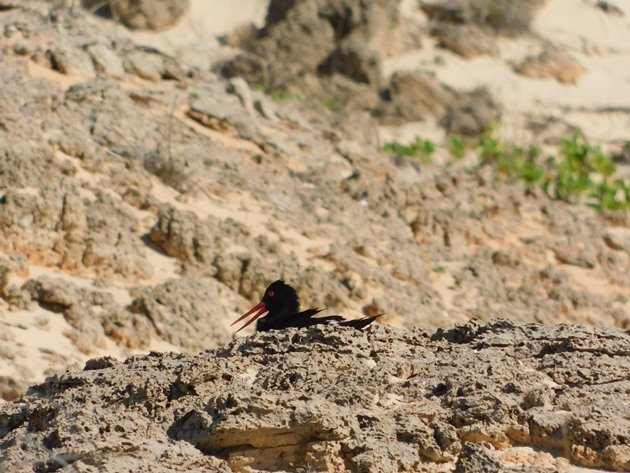
This year, like every year, the Pied Oystercatchers have not given up on trying to successfully breed along our coast here in Broome. The breeding season started early this year with the first eggs laid at the end of May. This pair of Pied Oystercatchers have incubated two clutches of eggs and had chicks for a few days on both occasions. They are currently making nest scrapes once again, so maybe it will be third time lucky.
The other two pairs of Pied Oystercatchers between the Surf Club and Gantheaume Point have also not given up yet. The pair closer to Gantheaume Point are still incubating their second clutch of two eggs and have chosen to nest in exactly the same place as the first clutch. This is the same nest site that they have used for many years. It is definitely a nest with a view! On the warmer days the Pied Oystercatchers will leave the nest to go to the sea and they appear to dampen their feathers to maintain the right temperature for the eggs. Often their bills are open as if to maintain their own body temperature.
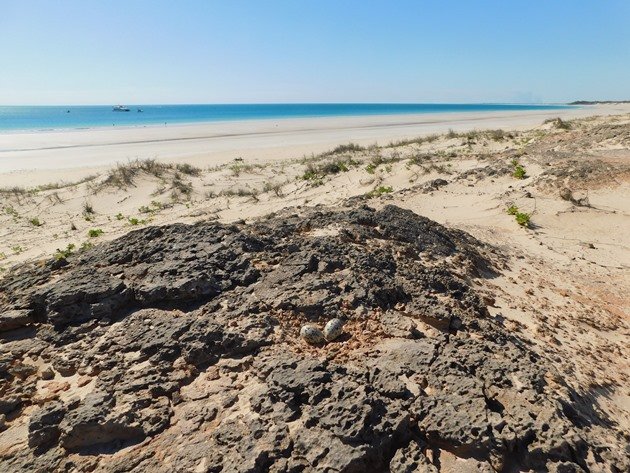
Pied Oystercatcher nest site
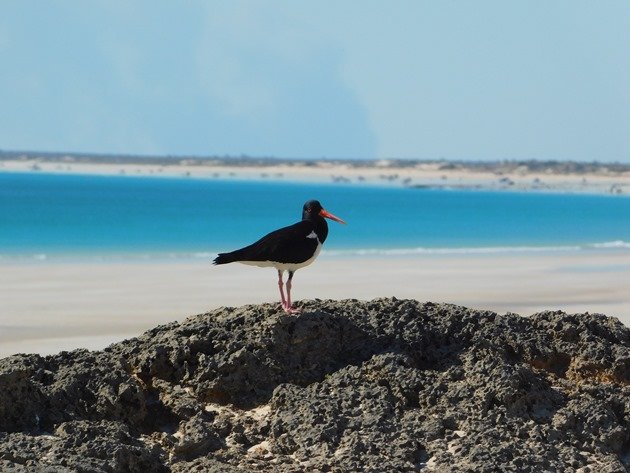
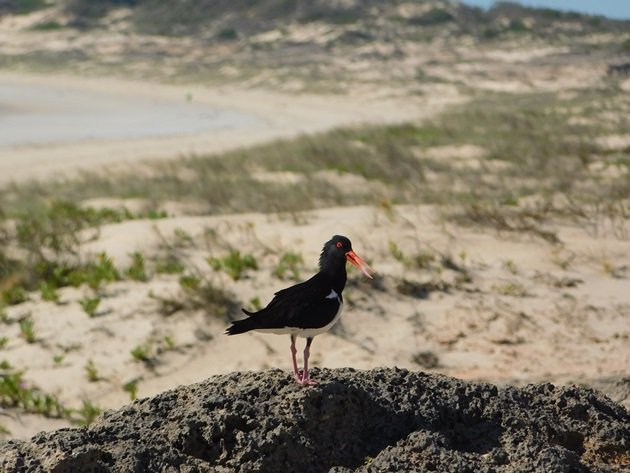
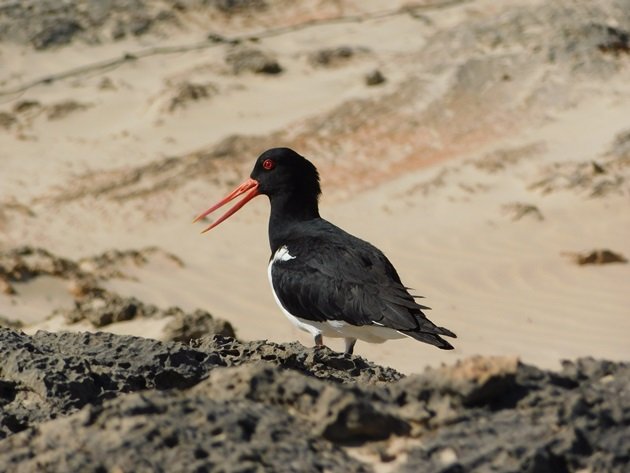
Pied Oystercatcher near the nest site
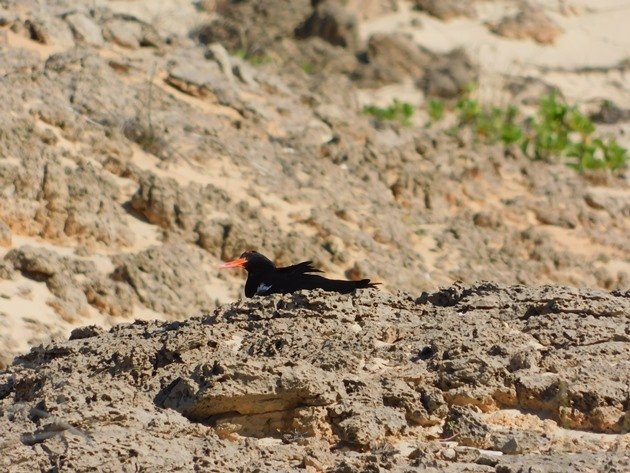
Eye to the sky looking for threats
The other pair of Pied Oystercatchers that lost their last clutch of eggs to a Sand Goanna on July 23rd have also attempted to breed again. The event must have been very traumatic, because they have actually moved to a new nest site a few hundred metres to the south, which they had not previously used. The eggs hatched out this week and the tides are very big, so there is a huge expanse of sand when the tide goes out. I observed the whole Pied Oystercatcher family at the water’s edge and the chicks were exposed and vulnerable. There was one other person heading towards me and the chicks were soon heading up the beach to find some cover.
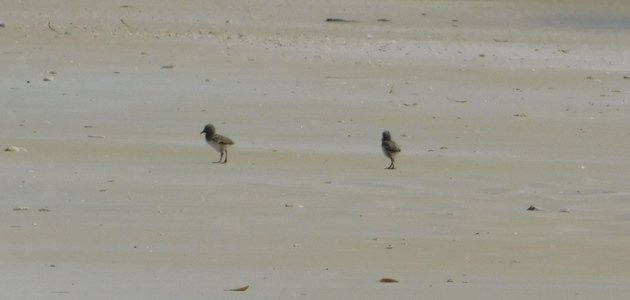
Pied Oystercatcher chicks exposed and vulnerable
Once the Pied Oystercatcher chicks made it to the high tide line they were well camouflaged in amongst the natural debris. After several very windy days there are a lot of grass seeds on the beach. I appreciate you can quite possibly not easily see the Pied Oystercatcher chicks in the photo below, so I will outline them for you!
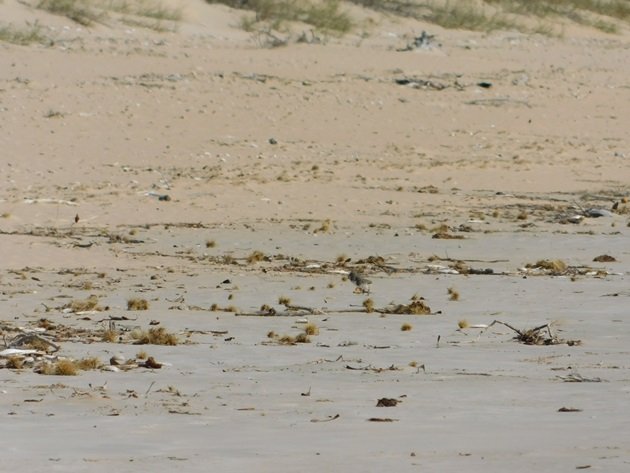
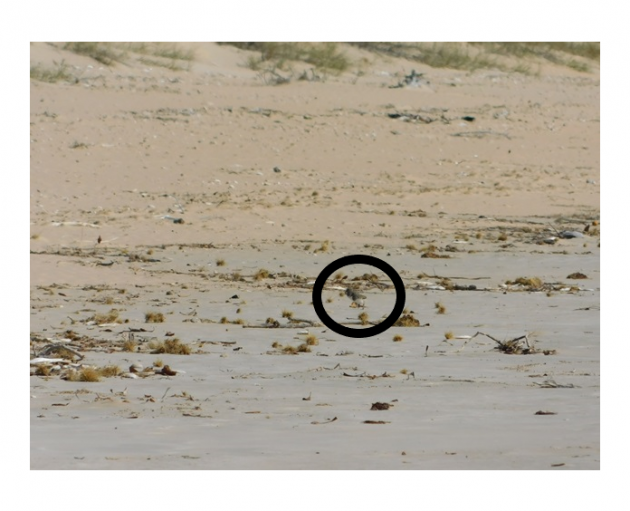
Pied Oystercatcher chicks amongst the debris at high tide
As the Pied Oystercatcher chicks moved above the high tide line to hide in the vegetation they were once again more easily visible. Their parents were just behind them, but first they were warning the other person on the beach to keep moving along. They were flying around him being very vocal and I am sure he had no idea what was going on!
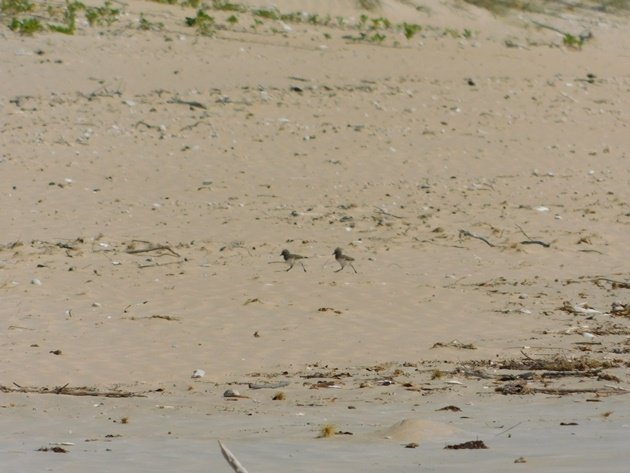
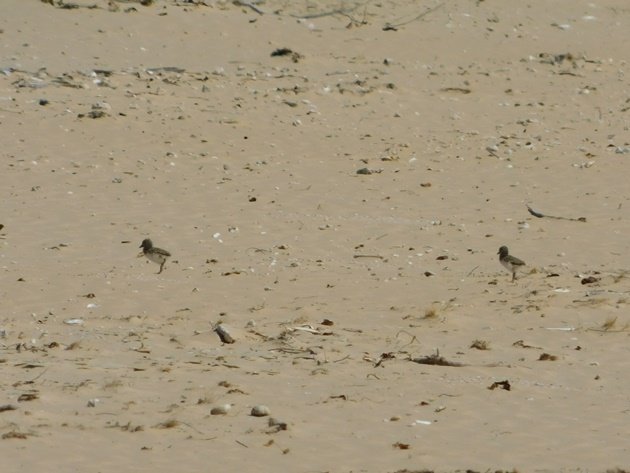

Pied Oystercatcher chicks above the high tide line
The adult Pied Oystercatchers then moved to the high tide mark to keep guard. When we have over nine metres of vertical tidal movement twice a day we have a lot of exposed sand at low tide. This does offer a lot more feeding ground for the shorebirds, but it comes with its risks. In daylight hours the Pied Oystercatchers are more likely to remain with the chicks in the vegetation in the shade.
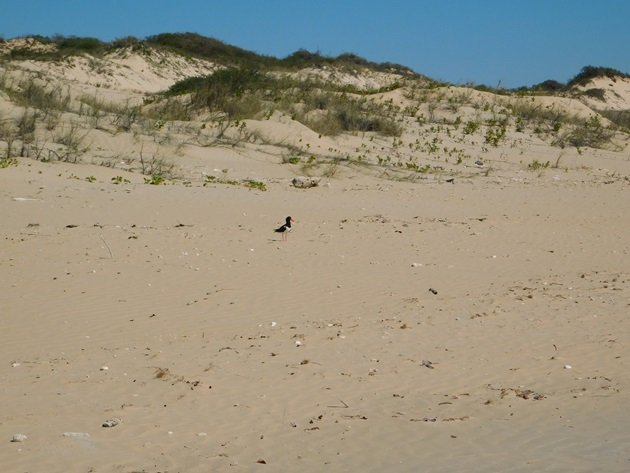
Pied Oystercatcher keeping guard
The weeks ahead will determine if there are any successful outcomes for the Pied Oystercatchers along our coastline this year. It is close to the end of the laying period now. The first pair of Pied Oystercatchers I have mentioned above were successful last year. Thankfully Pied Oystercatchers do live for a very long time, so they should be able to replace themselves during their lifetime. One of the oldest Pied Oystercatchers we know of along Broome’s coast was originally banded in 1992 and it was already over three years old then. This male bird is actually one of the oldest Pied Oystercatchers in Australia at the moment.











Leave a Comment